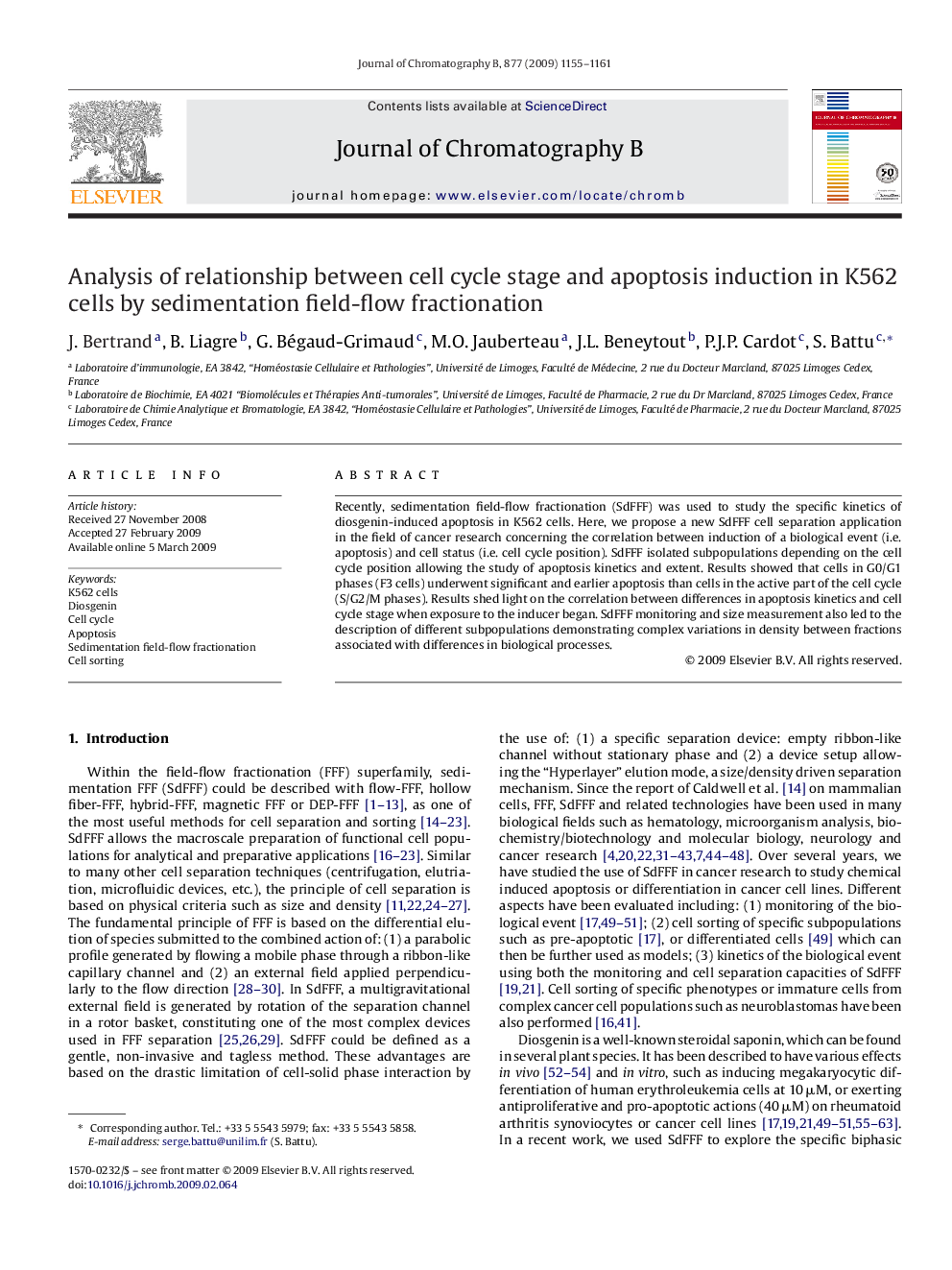| Article ID | Journal | Published Year | Pages | File Type |
|---|---|---|---|---|
| 1216248 | Journal of Chromatography B | 2009 | 7 Pages |
Recently, sedimentation field-flow fractionation (SdFFF) was used to study the specific kinetics of diosgenin-induced apoptosis in K562 cells. Here, we propose a new SdFFF cell separation application in the field of cancer research concerning the correlation between induction of a biological event (i.e. apoptosis) and cell status (i.e. cell cycle position). SdFFF isolated subpopulations depending on the cell cycle position allowing the study of apoptosis kinetics and extent. Results showed that cells in G0/G1 phases (F3 cells) underwent significant and earlier apoptosis than cells in the active part of the cell cycle (S/G2/M phases). Results shed light on the correlation between differences in apoptosis kinetics and cell cycle stage when exposure to the inducer began. SdFFF monitoring and size measurement also led to the description of different subpopulations demonstrating complex variations in density between fractions associated with differences in biological processes.
